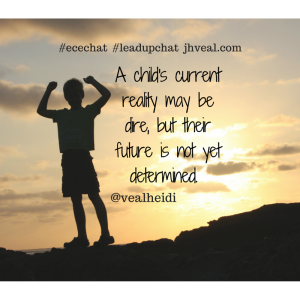
Boys bring a certain level of verve to any setting. Day or night, they are ready for action and movement. Boys have a natural curiosity that fuel their hunger for learning about our wonderful world. They instinctively want to experience their environments in a kinesthetic fashion and are never truly satisfied with a “because I said so” answer to their questions. In short, they are explorers and doers of the best kinds. Relentless in their search for adventure and always ready for a good ole’ ruckus. I know this is true not because I was a boy, but because I am the mother of two young boys, 8 and 4 years old. Maurice Sendak was never more honest and true when he penned the sentences “Let the wild rumpus start” and “Inside all of is a Wild Thing”. Sendak had such a knack for channeling the essence of our boy explorers!
Knowing that these are the hallmarks of healthy, growing boys why is it so many schools struggle to educate boys in a fashion that engage their full selves and optimize their many innate talents and characteristics? Below are my ideas for answering this question based on my own learning and experience as a mother and educator and a recent interview I participated in with Ruth Morhard and Richard Hawley, both experts and gifted authors on this topic of educating boys.
When teaching boys please remember…
Play is Their Work What may look like a simple act of play is a boy’s way of working out the intricacies of their ever expanding world. They need space to explore and opportunities to make messes, pretend, be loud, crash things, interact with peers, and imagine. Their job is to wonder, our job as the adults in their lives is to nurture their wonder and help provide outlets for their wonderings to expand. How and where can we offer increased opportunities for play in our schools, not just for boys, but all students?
Build, Destroy, Rebuild, & Repeat I recently learned a new word: Thinkering! This concept is based on the book by Michael Michalko Creative Thinkering: Putting Your Imagination to Work. Thinkering experiences are the kind of learning experiences boys crave at school! Boys are often on a quest to know how things work. They figure this out by employing the tried-and-true Build, Destroy, Rebuild cycle. Their visual-spatially bent minds crave experiences where they can put together and take apart. In a school setting, this can look like providing open ended time for building with blocks, creating in a pretend and play station, putting together and taking apart puzzles, construction and deconstruction opportunities with mixed materials, and maker-space experiences.
Relationships are Their X-Factor Show me you care and I’ll care about what you know! This is true for any person, be it a child or an adult, but it is essential for growing and developing boys in educational settings. Think of it this way, educators must build a relationship with a boy to open their avenues for learning. On a practical level, this looks like getting on their level (literally getting down, on the floor with them), engaging them in activities that are preferred for them, and really listening and responding to their ideas, questions, and needs. Nurture a respectful relationship with a boy and he will let you mold and teach him for a lifetime!

What tips, ideas, and strategies do you employ to capture the hearts and minds of the boys in your world?
Learning & Leading, Heidi
*This blog post was inspired by a recent pod-cast conversation “Getting Boys to Love School” I had with Rae Pica, founder and host of BAM! Radio Network’s Studentcentricity, Ruth Morhard, author of Wired to Move, and Richard Hawley, co-author of Reaching Boys/Teaching Boys. The topic of our pod-cast is “Ensuring Success for Boys”.


